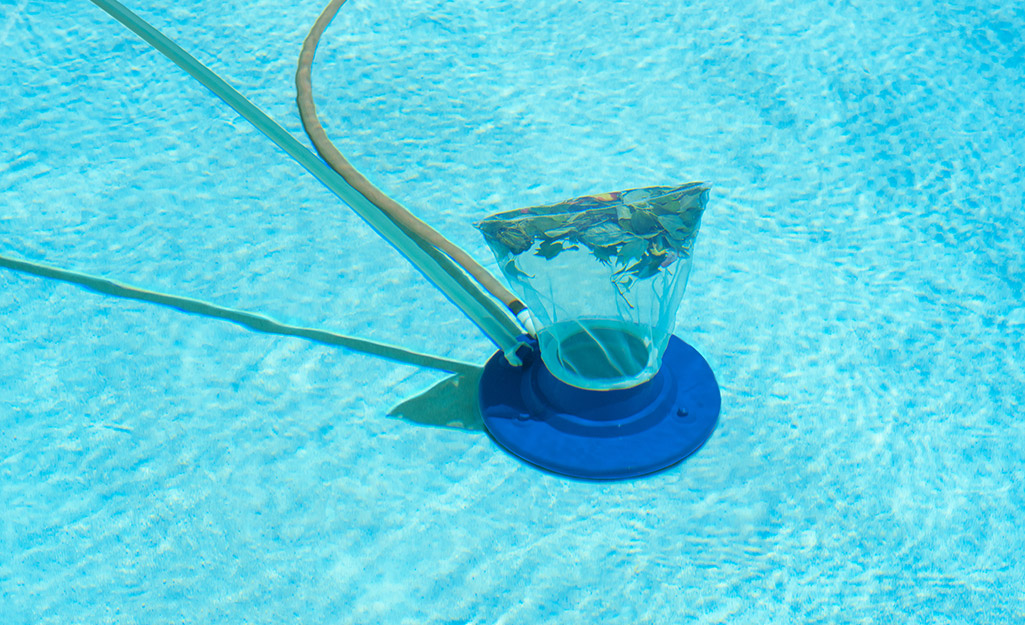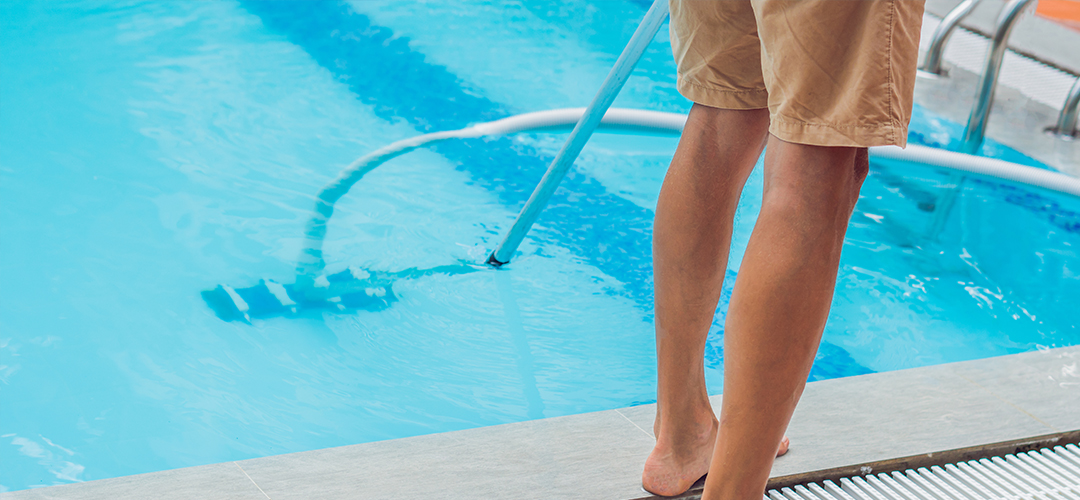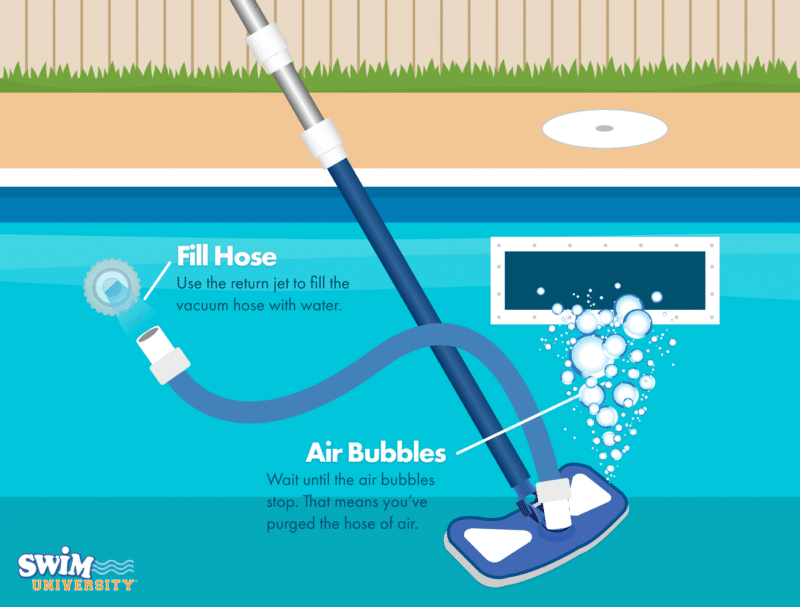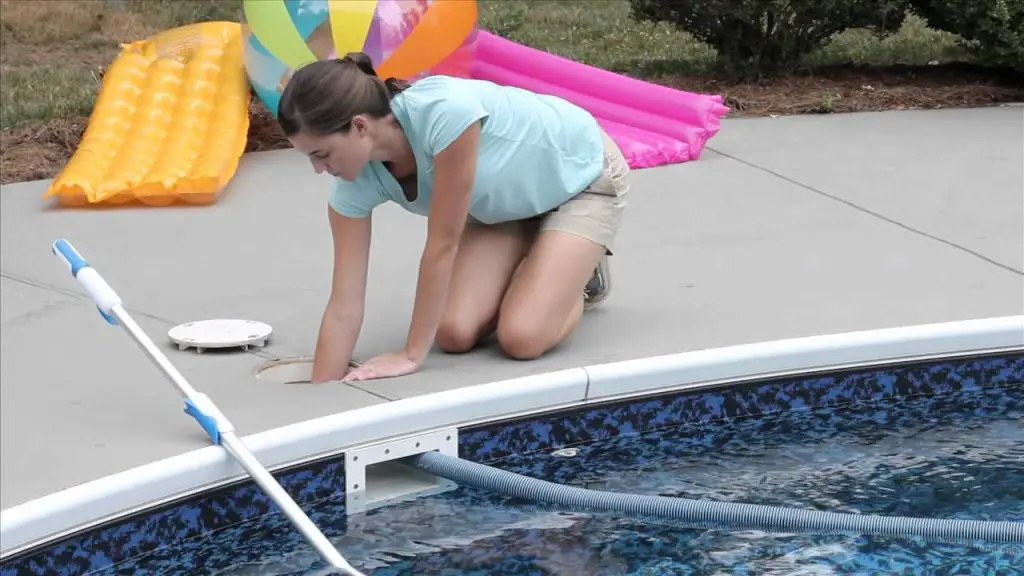To vacuum a pool, attach the vacuum head to the pool pole and connect the hose to the vacuum head and the skimmer suction port. Keeping your pool clean and debris-free is essential for maintaining its sparkling appearance and ensuring a healthy swimming environment.
One of the most effective ways to achieve this is by regularly vacuuming your pool. Vacuuming not only removes leaves, twigs, and other debris from the bottom of the pool but also eliminates dirt and algae, preventing them from clouding the water and potentially affecting swimmers.
By following a few simple steps, you can quickly and efficiently vacuum your pool, keeping it inviting and enjoyable for everyone. We will guide you through the process of vacuuming your pool, ensuring a pristine and hygienic swimming experience.
Preparations
Before you start vacuuming your pool, it’s essential to make necessary preparations to ensure the process goes smoothly and efficiently. This involves gathering the necessary equipment and checking the pool’s condition. Let’s dive into the details of each step.
Gathering Necessary Equipment
Before you begin to vacuum your pool, make sure to gather all the essential equipment you will need. Having the right tools at hand will save you time and ensure that the job gets done thoroughly.
- Pool vacuum: This can be a manual vacuum or an automatic one that attaches to your pool’s filtration system.
- Telescopic pole: This will allow you to reach all areas of the pool easily.
- Vacuum hose: Make sure it’s long enough to reach every corner of your pool.
- Skimmer basket: To remove any large debris from the pool’s surface before vacuuming.
- Brush: Use a pool brush to loosen any dirt or algae from the pool’s walls and floor.
Checking Pool Condition
Before you start the vacuuming process, take a moment to assess the condition of your pool. By doing so, you can ensure that the water is clean and safe for swimming. Here are a few things to check:
- Water level: Make sure the water level is between the recommended range to allow for proper vacuuming.
- Filtration system: Check that the filters are clean and functioning properly to effectively remove debris during vacuuming.
- Chemical balance: Test the water to ensure the pH and chlorine levels are within the ideal range for swimming.
Understanding Your Vacuum
Types Of Pool Vacuums
When it comes to pool maintenance, choosing the right vacuum is crucial. There are mainly three types of pool vacuums: manual, automatic, and robotic. Each type has its own pros and cons, catering to different pool sizes and shapes. Understanding the differences can help you select the most suitable vacuum for your pool.
Choosing The Right Vacuum For Your Pool
- Consider the size and shape of your pool when choosing a vacuum.
- Manual pool vacuums are great for spot cleaning and ideal for small pools or limited budgets.
- Automatic pool vacuums are convenient and efficient for routine cleanings, while robotic vacuums offer advanced features and independence.
- Ensure the vacuum you choose is compatible with your pool’s filtration system and surface material.
Cleaning Process
Keeping your pool clean is essential for maintaining water clarity and preventing algae growth. The cleaning process involves a few simple steps that can be easily performed to ensure your pool stays pristine.
Starting At The Shallow End
To begin cleaning your pool, always start at the shallow end. This allows for more effective vacuuming and ensures debris is properly removed from the bottom of the pool.
Brushing And Vacuuming
- Brush the walls and floor of your pool to loosen any dirt or algae buildup.
- Attach the pool vacuum to the pump and filter system, making sure to follow the manufacturer’s instructions for setup.
- Slowly move the vacuum across the pool floor in overlapping paths, covering the entire surface to collect debris.
By following these steps and maintaining a regular cleaning routine, you can keep your pool sparkling clean and ready for enjoyment.
Troubleshooting
Vacuuming your pool is an essential maintenance task that helps keep the water clean and clear. However, sometimes you might run into a few issues along the way. In this section, we will address common troubleshooting problems that you may encounter when vacuuming your pool, including dealing with tangled hoses and addressing suction issues.
Dealing With Tangled Hoses
Tangled hoses can be frustrating and time-consuming to deal with. However, with a few simple steps, you can quickly untangle them and get back to cleaning your pool in no time. Here’s what you can do:
- Identify the tangled area: Start by identifying where the hoses are tangled. Look for bends, loops, or twists in the hose.
- Disconnect the hose: Once you have located the tangled area, disconnect the hose from the pool cleaner and the skimmer or vacuum port.
- Gently straighten the hose: Hold both ends of the hose and gently straighten it out. Avoid applying too much force to prevent any damage to the hose.
- Remove any obstructions: Inspect the hose thoroughly and remove any debris or objects that might be causing the tangle.
- Reconnect and resume vacuuming: Once the hose is untangled, reconnect it to the pool cleaner and the skimmer or vacuum port. You can now resume vacuuming your pool.
Addressing Suction Issues
If you notice a decrease in suction or no suction at all while vacuuming your pool, there are several steps you can take to address this issue:
- Check the skimmer and pump baskets: Debris and leaves can accumulate in the skimmer and pump baskets, limiting suction. Clean out any obstructions from these baskets.
- Inspect the hose for leaks: A leak in the hose can result in reduced suction. Check the entire length of the hose for any cracks or holes. If you find any, replace the hose.
- Examine the pool filter: A clogged or dirty pool filter can hinder suction. Clean or backwash the filter as needed to ensure optimal performance.
- Check the pump impeller: The pump impeller can become clogged with debris, affecting suction. Remove any obstructions from the impeller.
- Ensure proper water level: Low water level in the pool can cause inadequate suction. Make sure the water level is within the recommended range.
By following these troubleshooting tips, you can effectively resolve common issues that may arise while vacuuming your pool. Keep your pool in pristine condition and enjoy crystal-clear water all summer long.
Maintaining Water Clarity
Maintaining water clarity in your pool is essential for a clean and inviting swimming experience. Learn how to vacuum your pool effectively to remove debris and keep the water crystal clear.
The Role Of Filtration Systems
Vacuuming a pool is just one step in the process of maintaining water clarity. The role of filtration systems is equally important. Filtration systems work to remove dirt, debris, and other impurities from the water, ensuring that it remains clear and clean. Without an efficient filtration system, the pool water can quickly become cloudy and uninviting.
Importance Of Regular Maintenance
Regular maintenance is crucial to ensuring the long-term clarity and cleanliness of your pool water. Regularly maintaining your pool involves not only vacuuming and maintaining the filtration system, but also regularly checking the chemical balance of the water, and performing any necessary adjustments. Consistent maintenance will help prevent the build-up of algae and other contaminants, thus keeping your pool water crystal clear.

Credit: www.homedepot.com
Tips And Tricks
Vacuuming your pool is an essential task to maintain clean and clear water. Here are some tips and tricks to make the process more efficient.
Optimizing Vacuuming Frequency
- Vacuum your pool at least once a week to prevent buildup of debris.
- Increase frequency during peak swimming seasons to keep water pristine.
- Monitor the pool condition to adjust vacuuming schedule as needed.
Utilizing Pool Skimmers
- Clean skimmer basket before vacuuming to improve suction power.
- Remove leaves and larger debris with skimmer before using vacuum.
- Empty skimmer regularly to maintain efficient water circulation.
Final Thoughts
Vacuuming your pool is essential to keep it clean and inviting for a refreshing swim. By following the steps and tips outlined in this guide, you can enjoy a sparkling pool all season long. Consistency is key in maintaining it, but the rewards of having a crystal-clear pool for relaxation and recreation are well worth the effort.
Enjoying A Crystal-clear Pool
Regular maintenance and vacuuming play a crucial role in the clarity and hygiene of your pool. By keeping the water free from debris, algae, and other contaminants, you’ll create an environment that is both visually appealing and safe for swimmers of all ages.
- Monitor the water chemistry regularly to ensure the optimal balance of pH and sanitizer levels.
- Skim the surface of the pool daily to remove any floating leaves, bugs, or other debris.
- Use a pool brush to scrub the walls and floor to prevent algae and stubborn dirt buildup.
- Invest in a quality pool vacuum to effectively remove dirt, sediment, and algae from the pool floor.
Consistency Is Key
Maintaining a consistent vacuuming schedule is essential for the long-term health of your pool. By integrating pool maintenance into your regular routine, you can ensure that your pool remains inviting and safe throughout the swimming season.
- Set a weekly schedule for vacuuming and stick to it religiously.
- Regularly check and clean the pool filter to ensure efficient filtration.
- Address any small issues promptly to prevent them from escalating into larger problems.
- Consider hiring a professional pool maintenance service for more thorough and periodic cleanings.

Credit: www.swimmingpool.com

Credit: www.swimuniversity.com
Conclusion
Proper pool vacuuming is essential for maintaining a clean and healthy swimming environment. Keep your pool sparkling with these simple tips and tricks. Regular maintenance will save you time and money in the long run. Follow these steps for a pristine pool all season long.





